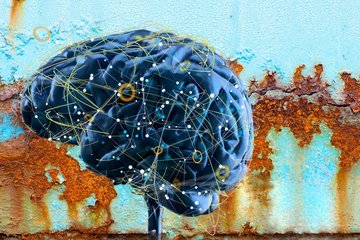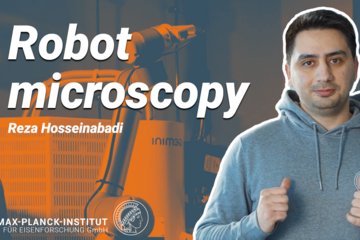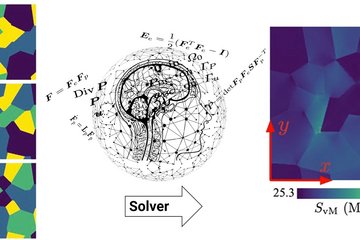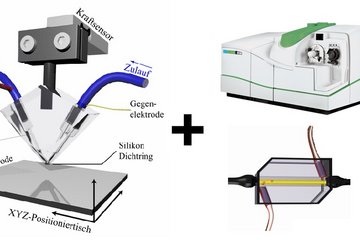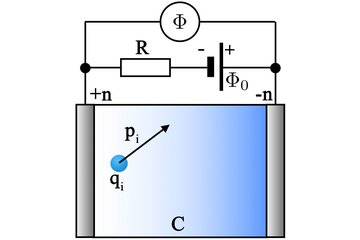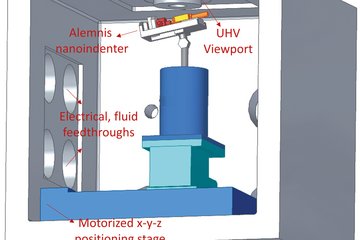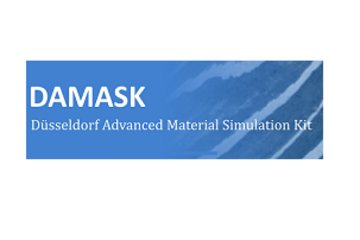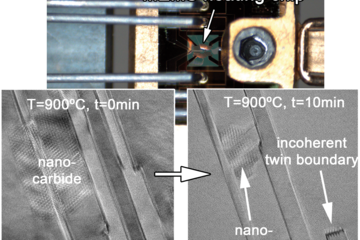All genres
121.
Talk
Enhancing mechanical properties of calcite by Mg substitutions - A Quantum-Mechanical Study. CM-Workshop, Attendorn, Germany (2011)
122.
Talk
First principles study on Fe-Ti alloys. CM-Workshop, Attendorn, Germany (2011)
123.
Talk
Design principles of crustacean cuticle: From molecules to skeletal elements. Workshop „From Nanoparticle Assembly to Functional Polymer Components” at Department of Geo- and Environmental Sciences, LMU, München, Germany (2011)
124.
Talk
Enhancing mechanical properties of calcite by Mg substitutions - A Quantum-Mechanical Study. Multi-Scale Mechanics of Biological and Bio-Inspired Hierarchical Materials and Surfaces, Glasgow, UK (2011)
125.
Talk
Study of iron EAM potentials and their effects on dislocation dynamic. E-MRS Spring Meeting, Nice, France (2011)
126.
Talk
Enhancing mechanical properties of calcite by Mg substitutions - A quantum-mechanical study. EuroBioMat - European Symposium on Biomaterials and Related Areas, Jena, Germany (2011)
127.
Talk
First principles study of elastic properties of eutectic Ti-Fe alloys up to their mechanical stability limits. DPG Spring Meeting 2011, Dresden, Germany (2011)
128.
Talk
Enhancing mechanical properties of calcite by Mg substitutions - An ab initio study. American Physical Society - March Meeting, Dallas, TX, USA (2011)
129.
Talk
Mechanical Design Principles of Crustacean Cuticle evaluated experimentally and by Ab initio-based Multiscale Simulations. Institute Colloquium, Institut de Mécanique des Fluides et des Solides, CNRS, Strasbourg, France (2011)
130.
Talk
Combining ab initio calculations and high-resolution experiments to understand advanced Mg alloys. German-Korean workshop on the “Production and industrial applications of semi-finished Mg products”, Irsee, Germany (2011)
131.
Talk
Enhancing mechanical properties of calcite by Mg substitutions: A quantum-mechanical study. DPG Frühjahrstagung, Dresden, Germany (2011)
132.
Talk
Ab initio study of thermodynamic, structural, and elastic properties of Mg-substituted crystalline calcite. TMS 2011, San Diego, CA, USA (2011)
133.
Talk
Arthropod cuticle: A biological multi-functional composite used as template for nano-to-macro-scale hierarchical modelling. Euro BioMat, Jena, Germany (2011)
134.
Talk
Arthropod cuticle: A biological multi-functional composite used as template for nano-to-macro-scale hierarchical modelling. THERMEC 2011, Quebec, Canada (2011)
135.
Talk
Enhancing mechanical properties of calcite by Mg substitutions: A quantum-mechanical study. Multiscale design modeling 2010, Brno, Czech Republic (2010)
136.
Talk
Design Principles of Load-bearing Cuticle from different Crustacean Species evaluated experimentally and by Ab initio-based Multiscale Simulations. MRS Fall Meeting 2010, Boston, MA, USA (2010)
137.
Talk
Ab initio based multiscale modeling of biological composites: Example of the exoskeleton of the lobster Homarus Americanus. Colloquium Lecture, Center for Nanoscience CeNS, Ludwigs-Maximilians Universität München, München, Germany (2010)
138.
Talk
Using ab-initio based multiscale models and experiments for alloy design. Colloquium Lecture, Institute for High Performance Computing, Agency of Science, Technology and Research, Singapore City, Singapore (2010)
139.
Talk
Phase stabilities of metals at finite temperatures: Ab initio meets CALPHAD. 468. WE-Heraeus-Seminar, Ab intio Description of Iron and Steel (ADIS2010): Mechanical Properties, Ringberg, Germany (2010)
140.
Talk
Identification of fundamental materials‐design limits in ultra lightweight Mg–Li alloys via quantum-mechanical calculations. Multiscale Materials Modeling, Freiburg, Germany (2010)


